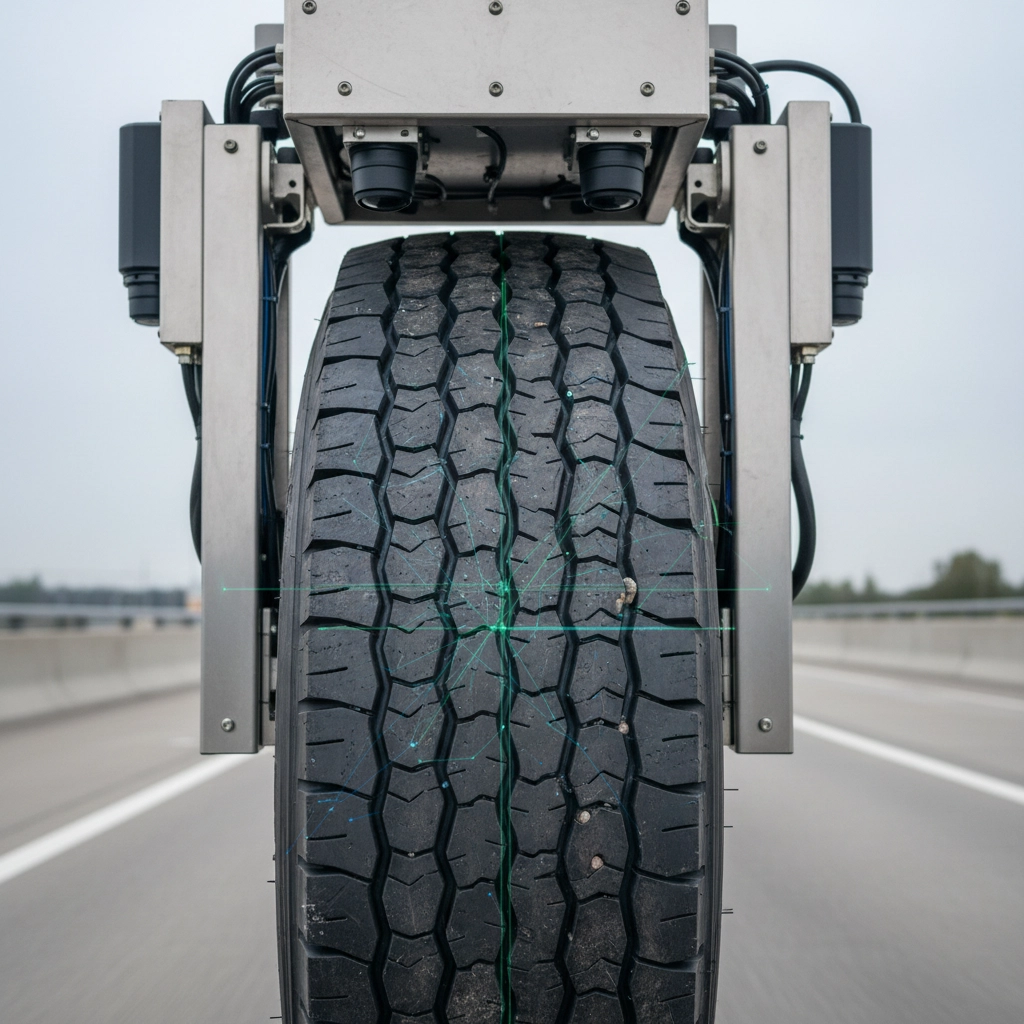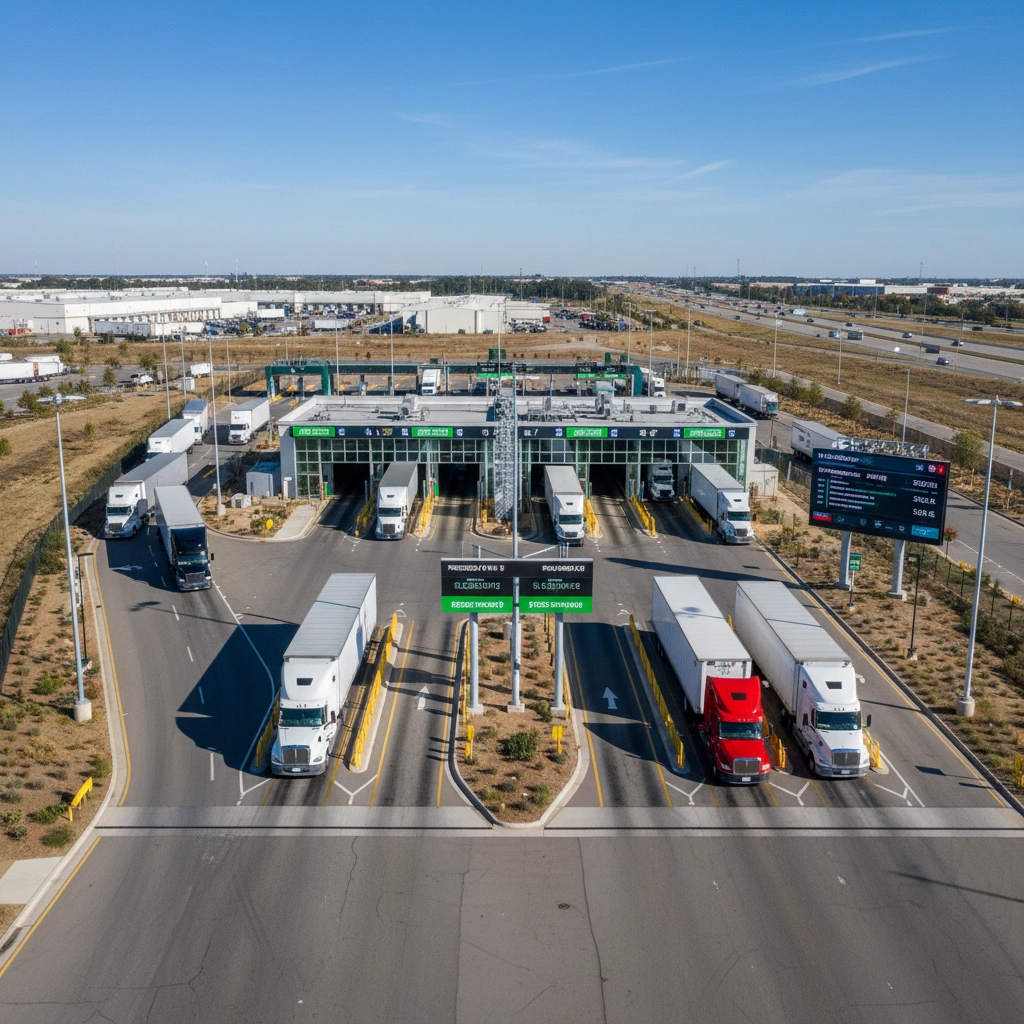What if I told you that truck inspections could happen at highway speeds without a single stop? Most fleet operators think compliance checks mean delays, downtime, and bottlenecks: until they see what Arkansas DOT just deployed across two of America's busiest freight corridors.
The Arkansas Department of Transportation has quietly revolutionized how commercial vehicle inspections work, partnering with Quarterhill to launch a $2.7 million AI-powered freight management system that's already changing the game for truckers entering the state. Here's everything you need to know about this technology that's keeping compliant trucks moving while catching safety violations faster than ever.
The $2.7 Million Solution That's Redefining Truck Inspections
Arkansas DOT didn't just buy new equipment: they built an intelligent inspection ecosystem that processes commercial vehicles in real-time without stopping traffic. This isn't your grandfather's weigh station. It's a sophisticated network of sensors, cameras, and AI algorithms working together to evaluate every truck passing through at full highway speed.

The system represents a fundamental shift in how states approach commercial vehicle enforcement. Instead of creating chokepoints where every truck must stop, Arkansas deployed technology that instantly identifies which vehicles need inspection and which can continue uninterrupted. The result? Compliant carriers keep rolling while enforcement resources focus where they're needed most.
Why Arkansas chose this approach: The state handles massive freight volumes as a central logistics hub, with I-40 and I-55 serving as critical arteries for coast-to-coast commerce. Traditional inspection methods couldn't scale with growing traffic demands without creating significant delays that hurt both carriers and the economy.
Breaking Down the Technology: Five Systems Working as One
The Arkansas AI freight management solution combines five distinct technologies into a seamless inspection process:
Weigh-in-Motion (WIM) Sensors
These embedded highway sensors capture precise truck weights as vehicles travel at normal speeds. No more crawling over scales or waiting in line: the system knows if you're overweight before you've even seen the inspection station. WIM technology has been around for decades, but Arkansas integrated it with AI analysis that immediately flags violations and cross-references them with other safety data.
Tire Anomaly Classification System (TACS)
This is where things get futuristic. High-speed cameras and sensors scan tire conditions in real-time, identifying worn treads, improper inflation, or damage that could cause blowouts. The AI has been trained on thousands of tire images to spot problems human inspectors might miss, especially at highway speeds.

License Plate Recognition and DOT Verification
Advanced cameras capture and verify license plates, cross-referencing them instantly against DOT databases, safety ratings, and compliance records. The system knows within seconds whether a carrier has outstanding violations, expired permits, or safety concerns that require attention.
Intelligent Roadside Operations Computers (iROC)
These are the brains of the operation: powerful computers that process all sensor data simultaneously and make instant decisions about which vehicles need further inspection. The iROC system can analyze multiple data streams faster than human inspectors could process a single truck.
Dynamic Message Boards
Based on the AI's analysis, electronic signs direct drivers in real-time. Compliant trucks see "Continue" messages and bypass the station entirely. Vehicles flagged for issues receive specific directions to inspection bays. It's like having a traffic controller who never sleeps and processes information at computer speed.
Strategic Deployment: Why These Two Locations Matter
Arkansas didn't randomly choose where to deploy this technology. The system operates at two critical entry points that handle some of the highest commercial vehicle volumes in the region:
Lehi on I-40 Eastbound: This location captures freight entering Arkansas from the west, including traffic from major distribution centers in Texas, Oklahoma, and California. I-40 serves as a primary transcontinental freight route, making this a strategic chokepoint for ensuring compliance.
Marion on I-55 Southbound: This station monitors traffic from the north, including freight from Chicago, Memphis, and other major logistics hubs. I-55 connects directly to major population centers and distribution networks throughout the Southeast.

These locations were selected based on traffic patterns, enforcement needs, and infrastructure capabilities. Both sites handle enough volume to justify the technology investment while serving as testing grounds for potential statewide expansion.
Game-Changing Benefits for Fleet Operators and Drivers
The Arkansas system delivers tangible benefits that directly impact your bottom line and operational efficiency:
Reduced Delays for Compliant Carriers
If your trucks maintain proper weights, tire conditions, and DOT compliance, they'll rarely need to stop. The system identifies compliant vehicles within seconds and waves them through. This means faster delivery times, reduced fuel costs from idling, and improved driver satisfaction.
Predictable Inspection Processes
Instead of wondering whether you'll face delays at state lines, the system provides consistent, data-driven inspections. You know exactly what triggers an inspection stop, making compliance planning more straightforward.
Enhanced Safety Detection
The AI catches safety issues human inspectors might miss, especially problems that develop between formal inspections. Early detection of tire problems, weight violations, or maintenance issues helps prevent roadside breakdowns and accidents.
Data-Driven Enforcement
Rather than random stops or subjective decisions, inspections are based on objective sensor data. This creates a more fair and consistent enforcement environment where compliance efforts are rewarded with smoother operations.
What This Technology Means for Trucking's Future
Arkansas DOT's deployment represents more than a local improvement: it's a preview of how freight management will evolve nationwide. Several trends are becoming clear:
Automation Over Infrastructure: Instead of building more physical inspection stations, states will invest in smart technology that maximizes existing infrastructure efficiency. This approach costs less and scales better than traditional methods.
Real-Time Compliance Monitoring: The days of point-in-time inspections are numbered. Future systems will continuously monitor vehicle conditions, creating ongoing compliance relationships rather than periodic checkpoint interactions.

Integrated Data Sharing: As more states adopt similar systems, expect cross-border data sharing that creates seamless compliance corridors. A truck's safety record in Arkansas could influence its inspection probability in Tennessee or Missouri.
Predictive Safety Management: AI analysis of tire conditions, weight patterns, and maintenance data will enable predictive safety management, alerting carriers to potential issues before they cause problems.
Quick Facts: Arkansas AI Freight System by the Numbers
- Investment: $2.7 million initial deployment
- Locations: 2 strategic interstate entry points
- Processing Speed: Real-time analysis at highway speeds
- Technology Partners: Quarterhill (primary contractor)
- Primary Interstates: I-40 and I-55
- Key Benefits: Reduced delays, enhanced safety detection, data-driven enforcement
The Bottom Line for Your Fleet
Arkansas DOT's AI freight management system proves that technology can solve longstanding transportation challenges without sacrificing safety or compliance. For fleet operators, this represents an opportunity to turn compliance into a competitive advantage.
Compliant carriers benefit immediately through reduced delays and predictable operations. Safety-conscious fleets gain from enhanced monitoring that catches problems early. Data-driven operators can use inspection patterns to optimize maintenance schedules and operational practices.
This isn't just about Arkansas: it's about the future of freight management across America. States watching Arkansas's success will likely deploy similar systems, creating a network of intelligent inspection corridors that reward compliance while maintaining safety standards.

Ready to stay ahead of transportation technology trends? Follow GoTrucking.News for the latest updates on AI freight management, regulatory changes, and industry innovations that impact your operations.
What's your experience with automated inspection systems? Share your thoughts and connect with fellow fleet operators:
📱 Follow us on social media:
- LinkedIn: @GoTruckingNews
- Twitter/X: @GoTruckingNews
- Facebook: @GoTruckingNews
- Instagram: @GoTruckingNews
📧 Contact our editorial team: news@gotrucking.news
📞 Media inquiries: (555) 123-TRUCK
#AIFreight #TruckingTech #ArkansasDOT #FleetManagement #CommercialVehicles #TransportationInnovation #TruckingNews #FreightTechnology #SmartLogistics
Stay connected with GoTrucking.News for daily updates on technology, regulations, and industry trends that matter to your trucking operation. Subscribe to our newsletter for exclusive insights delivered directly to your inbox.


